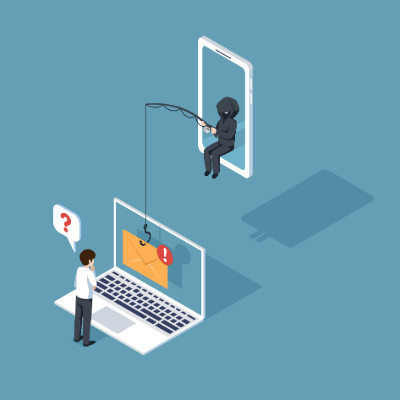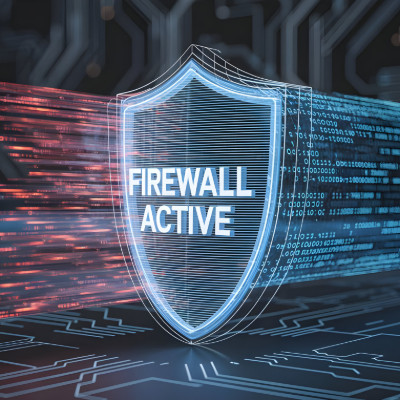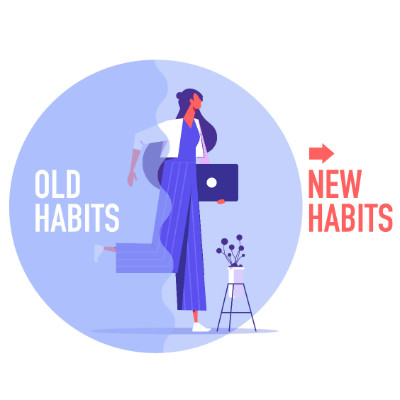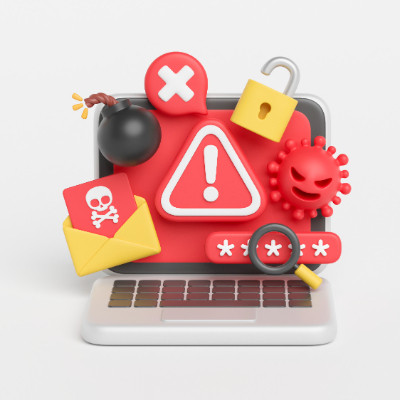Here’s a challenge; go to any cybersecurity news website and see how far you can go before seeing an article about some new type of ransomware attack. It’s everywhere, and it’s scary, but that doesn’t mean your business has to cower in fear. With the right tools and resources at your disposal, you too can fight back against ransomware. Here’s how you can protect your business from ransomware and the threats it poses.
Poweron Technology Blog
All businesses need a little IT assistance from time to time, whether it’s for a simple hiccup some software or a full-blown technology emergency. Cybercriminals will often pose as IT support in attempts to capture this low-hanging fruit. Your employees should know how to spot the following warning signs from a fraudulent tech support squad.
A successful business is a secure business. You probably have a good lock on the front door, maybe an alarm system, and secure cabinets for important documents. You do all of this to protect your business' physical assets from threats. So why wouldn't you do the same for your digital assets?
Just as you have physical security measures, your business also needs strong cybersecurity policies. They help create clear rules for employees to follow and a plan to fall back on if an incident occurs.
Business owners have a lot of duties and responsibilities, and while you can hire a lot of people to cover some of the more stressful ones, it might feel strange to outsource your company’s technology management. You know IT is important, so that’s why you feel like you have to do it yourself, or at least in-house, but in reality, you’re the last person who should be working with your technology—and we’ll explain why.
Tips are great as long as they actually work. Business owners need more technology tips than just about anything else, whether that is app-specific or general care of technology. We try to do our best to provide useful tips a couple of times a month, but this week we wanted to focus on what is probably the most important tip we can provide.
Cyberscams can be incredibly well-crafted and dangerous, and a significant portion of this danger stems from the scammer's ability to effectively utilize the psychological triggers that we all possess to some degree. Modern security training tends to focus on what signs we all need to keep an eye out for—and for good reason—but it does little to explore why modern scams are as effective as they are.
Let’s fix that by taking a moment to examine the tricks the scammers play so you can be that much more prepared to stop them by understanding how they work.
There’s a reason why we tend to focus on security, and that’s because it’s not a matter of if you experience a cyberattack, but when. It’s your responsibility to make sure that you’re ready to act in the right way when faced with these attacks. One of the best ways you can be prepared is by working with a managed service provider like us. Today, we have three ways we, as a managed service provider, can help you take the fight to cybersecurity threats.
Ransomware has emerged as one of the most dangerous modern threats to businesses, and when you consider just what’s at stake with a ransomware infection, you’ll realize we’re not exaggerating. The worst variants of ransomware will attempt to extort you through any means necessary, and when you don’t give in so easily, they’ll pull out the big guns: double and triple extortion.
They say a man’s home is his castle. We’d contend that a more apt comparison is that someone’s business is more like their castle, realistically speaking.
As such, it is essential to ensure your security in every way possible. Much like a traditional castle was constructed to keep threats out, your business’ security needs to be approached in a similar way.
While we aren’t suggesting that you literally dig a moat or maintain cauldrons full of boiling oil, you do need to implement security measures that serve the same purpose for your business and its network.
One of the greatest threats to modern businesses is a cyberattack and the consequent data breach. These types of threats often target outdated systems that haven’t been patched or upgraded with fixes to vulnerabilities. Today, we want to go over some of the most likely outdated hardware and software issues you might encounter on your own infrastructure so you can address them and keep your business safe.
With so many devices now connecting to the Internet, decreasing your business’ threat surface area is more important than ever. Your threat surface area consists of any device that connects to your organization’s IT infrastructure, and if you’re not careful or forget a couple of oddball wearables, you could be looking at a data breach. Today, we want to go over how you can prevent that from happening.
Fairly recently, news circulated that a data breach had exposed 16 billion—yes, with a “b”—passwords for various logins, including social media accounts, virtual private networks, corporate tools, and more. Effectively, every online service imaginable was represented in this breach.
This is very bad… arguably unprecedented.
However, this impression is at best misleading. Let’s dig into the truth of the matter, while still acknowledging that there are some lessons to be learned.
When it comes to cybersecurity, businesses have a lot to keep tabs on—even a small business like yours. In fact, you wouldn’t believe just how much goes into cybersecurity and why your organization needs to make it a priority. Today, we want to convince you that cybersecurity is more than just a buzzword on the Internet; it’s a lifeline that will keep your company secure.
Technology is meant to be the wind in your business' sails, propelling you forward, simplifying tasks, and making operations smoother than a freshly paved highway, right? Sometimes, it is! Other times, it feels more like a mischievous gremlin has been let loose in the engine room, and certain seemingly small habits can escalate into full-blown operational nightmares.
Here at Poweron Technology, we've seen a pattern or two. Today, let's shine a spotlight on three common technology missteps that might be silently sabotaging your productivity or even worse, leaving your digital doors wide open.
Third-party vendors are essential for modern businesses, as they deliver mission-critical resources and tools to the organizations that utilize them, including raw materials, software, and other services. Unfortunately, these vendors can also serve as direct lines into your business for a cyberattack to take advantage of for their own purposes.
Let’s talk a little about how you can still lean on your vendors without sacrificing your all-important security.
The constant chatter about cybersecurity can really be overwhelming. While some Internet tales might be exaggerated, the reality is that these cybersecurity risks are a serious concern for every business. Is your organization truly prepared to confront the sophisticated digital adversaries of our time? Let’s take a look at three prevalent cyberthreats that could inflict significant damage on a business, and what you can do to keep them from negatively impacting yours.
We're all busy. Whether you're steering the ship or making sure the daily operations run smoothly, cybersecurity might feel like another drain on your time. Imagine a day when everything grinds to a halt, trust evaporates, or significant money vanishes into thin air. These aren't abstract fears; they are all-too-real consequences of cybersecurity oversights, creating moments that everyone in a business, from top to bottom, desperately wants to avoid… and can.




















